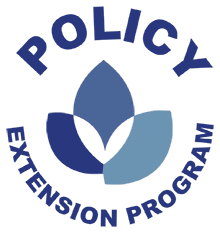The Clean Water Act is a federal law that regulates pollutant discharges to ensure water quality standards for surface water is upheld. A variety of pollution control programs have been implemented by the U.S. Environmental Protection Agency under the Clean Water Act. The Clean Water Act requires all states establish water quality standards according to designated uses of water bodies and to monitor water quality. It provides a system for identifying impaired waters and for developing estimated loads of pollutants that each water body could receive and still meet water quality standards.
Some things to know about the Clean Water Act:
In Florida, two agencies are involved in setting rules for ensuring a level of water quality in Florida’s rivers, streams, lakes, canals, and estuaries: the U.S. Environmental Protection Agency (USEPA) and the Florida Department of Environmental Protection (FDEP). The USEPA enforces the Clean Water Act of 1972, and also ensures that states have appropriate rules to protect water quality. The FDEP creates the processes for stakeholders and citizens to follow to meet water quality goals.
- A water body (e.g. lake, estuary, section of river) is assigned a designated beneficial use which could be:
Class I -‐ Potable Water Supplies
Class II -‐ Shellfish Propagation or Harvesting
Class III -‐ Fish Consumption, Recreation
Class IV -‐ Agricultural Water Supplies
Class V -‐ Navigation, Utility and Industrial Use - Water quality of the water body is compared to water quality standards for that designated use. Florida uses numeric criteria for nutrients. A numeric standard defines the maximum nitrogen and/or phosphorus concentration in a water body that will maintain its designated use (see http://edis.ifas.ufl.edu/pdffiles/SS/SS52800.pdf).
- If the surface water does not meet water quality standards, it is considered “impaired.” This means it is polluted to the extent that it is not meeting the designated use. It might be too polluted to swim in, or too polluted to harvest shellfish.
- When a water body is impaired, a Total Maximum Daily Load (TMDL) of pollutant is calculated for it. A TMDL is established for each pollutant of concern for the impaired water body. Excessive nitrogen and phosphorus often come from fertilizers, and sometimes from leaky septic tank systems and faulty water treatment plants.
- Because rain and runoff capture pollutants and bring them to the receiving water body, an action plan is designed for the watershed (basin) that drains to that water body. A Basin Management Action Plan (BMAP) is developed by FDEP with public input for the land around an impaired water body. This plan affects managers of water treatment plants, municipalities managing stormwater, agricultural producers and other residents.
- Best Management Practices (BMPs) are part of the BMAP. The BMPs are actions and practices that are researched for effectiveness, documented and training is provided for how to implement them.
- The effectiveness of the BMAP is measured by monitoring water quality of the water body and related tributaries every 5 years. Water quality continues to be monitored over time.
Additionally, the USEPA provided specific information about agriculture-specific requirements. The requirements are categorized as:
facilities

